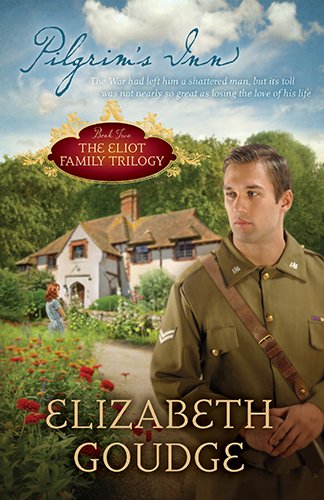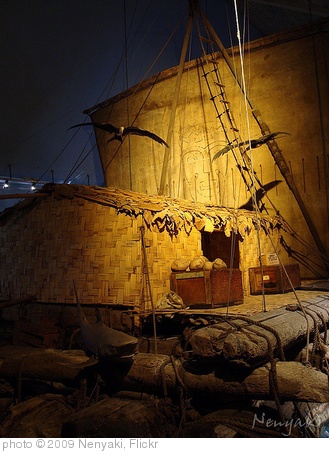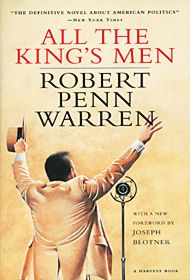 I have had this book on my TBR list for a few years, but I haven’t been able to find a copy anywhere, not in my big city library system, not at the local used bookstores. So when I found a copy at the Blooms’ little bookstore, I was delighted. Britisher Nevil Shute (Norway) is most famous for two of his other books, On the Beach, an apocalyptic novel about nuclear holocaust, and A Town Like Alice, a story of post-World War II development in the outback of Australia. However, I’ve enjoyed others of his books, too, including The Pied Piper, The Far Country, and Trustee from the Toolroom.
I have had this book on my TBR list for a few years, but I haven’t been able to find a copy anywhere, not in my big city library system, not at the local used bookstores. So when I found a copy at the Blooms’ little bookstore, I was delighted. Britisher Nevil Shute (Norway) is most famous for two of his other books, On the Beach, an apocalyptic novel about nuclear holocaust, and A Town Like Alice, a story of post-World War II development in the outback of Australia. However, I’ve enjoyed others of his books, too, including The Pied Piper, The Far Country, and Trustee from the Toolroom.
So, The Chequer Board begins with Mr. John Turner going to see a doctor, a specialist, for help with some troubling physical symptoms that have been interfering with his life and work as a sort of traveling salesman for the company, Cereal Products, Ltd. Mr. Turner’s life is about to take a “turn” for the worse when he receives the news from the doctor that an old war injury is about to take his life. Mr. Turner only has a few months, maybe a year, to live.
Dr. Hughes, who is a sort of framing narrator for the novel, appearing only in the first and last chapters, is not terribly impressed with his patient, John Turner, at first. The good doctor describes Turner as “not very prepossessing. He was about forty years old with a fresh complexion and sandy hair, going a little bald. He had a jaunty air of cheerfulness and bonhomie which did not fit in well with my consulting room; he was the sort of man who would be the life and soul of the party in the saloon bar of a good-class pub, or at the races. He was wearing rather a bright brown suit with a very bright tie, and he carried a bowler hat.” With the added information that this book was published in 1947 and takes place in about that year, can’t you just picture Mr. Turner, in all his florid, Willie Loman-esque splendor?
Mr. Turner reminded me of Willie Loman (Death of a Salesman) in other ways, too. Turner is a little bit crooked, we find out, not above taking advantage of an opportunity to make a good deal on the side or skim a little money off a sale. Otherwise, he says, the taxes would make it impossible for a man to get ahead at all. And he and his wife have settled into a rather typical middle class life, with not much in common, and a lot of low-level wrangling and mis-communication between the two of them. The news of Mr. Turner’s imminent death changes everything.
Turner begins to reminisce about the time he spent in hospital with three other injured servicemen, and he becomes fixated on finding the other three men and helping them, if they need help. As it turns out, Turner is more helped by the search and by what he finds out about his three fellow hospital mates than he is able to help them.
I must have been in just the right mood for this novel. There’s some World War II adventure involved, and themes of racial harmony and overcoming adversity, but it’s really just a gentle, rather philosophical, story about people muddling their way through life. My own life is in sort of a muddle right now, and I appreciated Mr. Turner’s frequent, though cliched reminder that “we’ll all be the same in a hundred years.” In spite of its tendency to promote Buddhism and denigrate Christianity, the novel was still a comfort to me. It’s about normal, average people dealing with the war and its aftermath in interesting and somewhat unpredictable ways.
The characters do make frequent (and jarring to a 21st century reader) use of the n-word in reference to a black American soldier who was one of Turner’s three hospital mates. The word was fairly typical, I think, in 1947 in England and in America, and perhaps didn’t carry quite the same derogatory meaning in British parlance? Anyway, the book treats its black characters and other POC characters (Burmese) with respect and understanding, while showing how many people in the 1940’s did not do the same.
The title of this book by Mr. Shute is fun to think about, too. It could refer to the past events that Mr. Turner explores in the book, chequered with light and dark. Or the theme of white and colored people reaching for racial reconciliation and even community is another meaning that finds an apt image in the light and dark chequerboard. The idea that life is a sort of game in which one makes moves either good or bad, and that in consequence each person might be reincarnated as a higher or lower being than he was before is also alluded to in the title and in the story.







